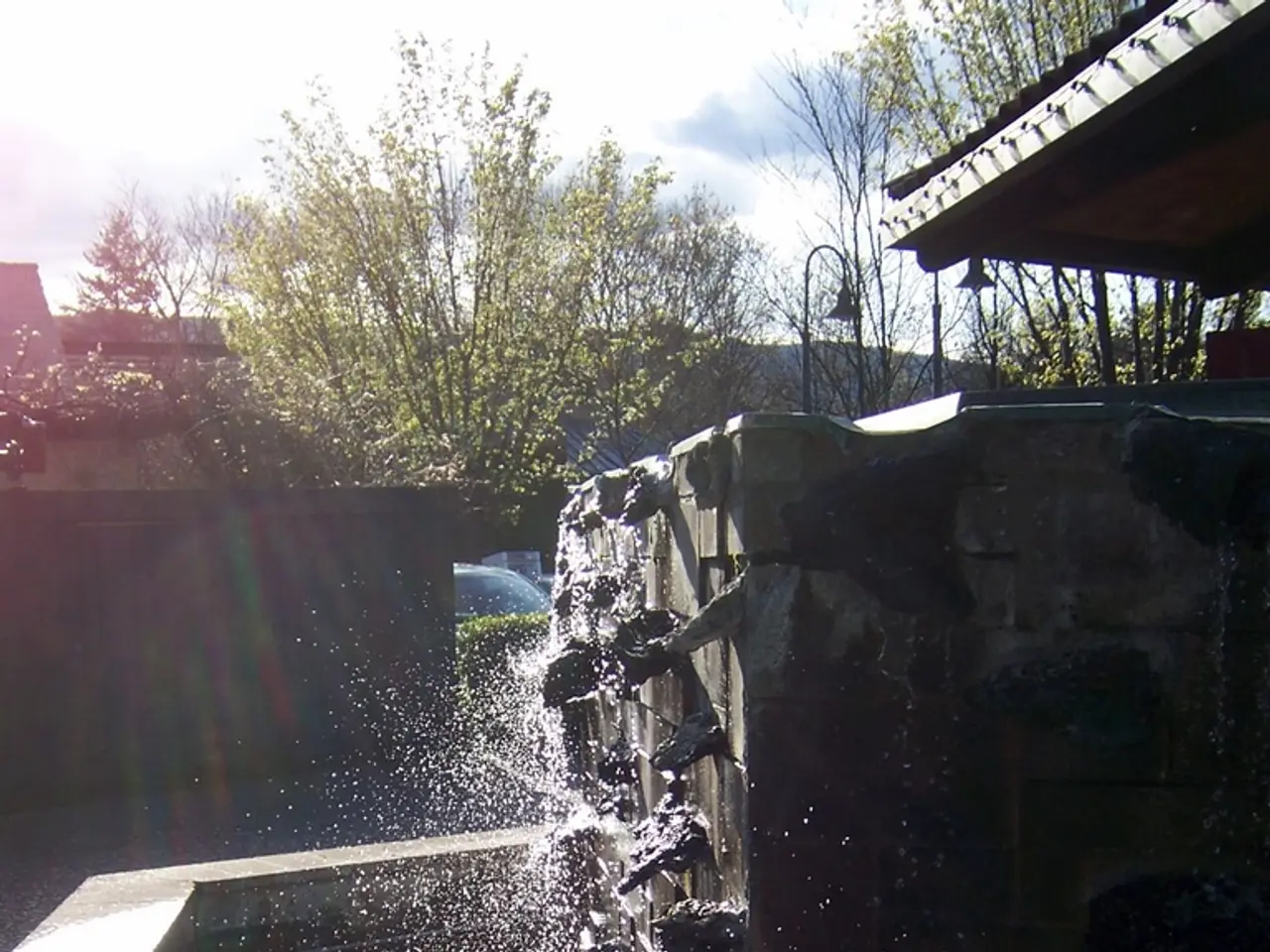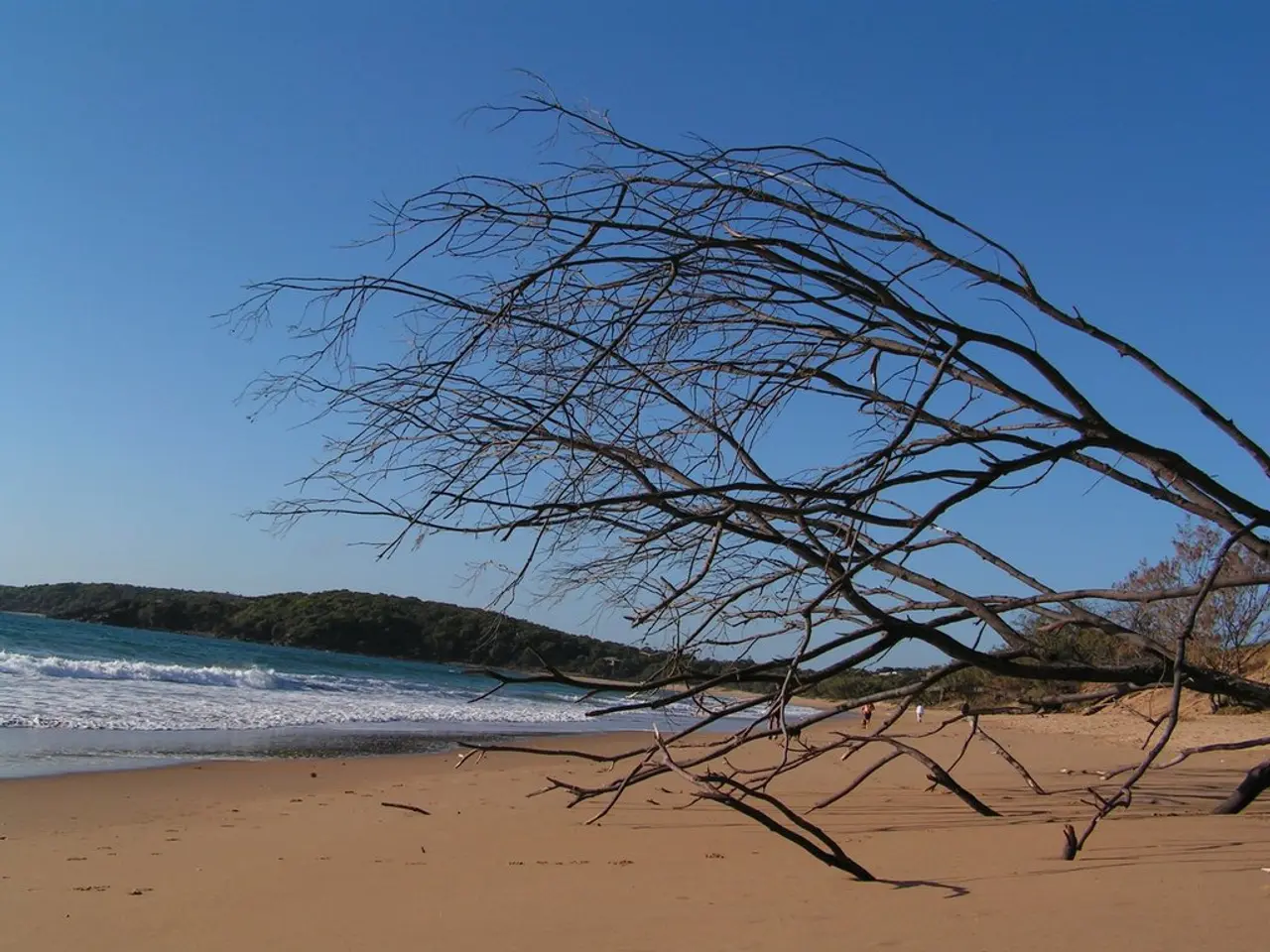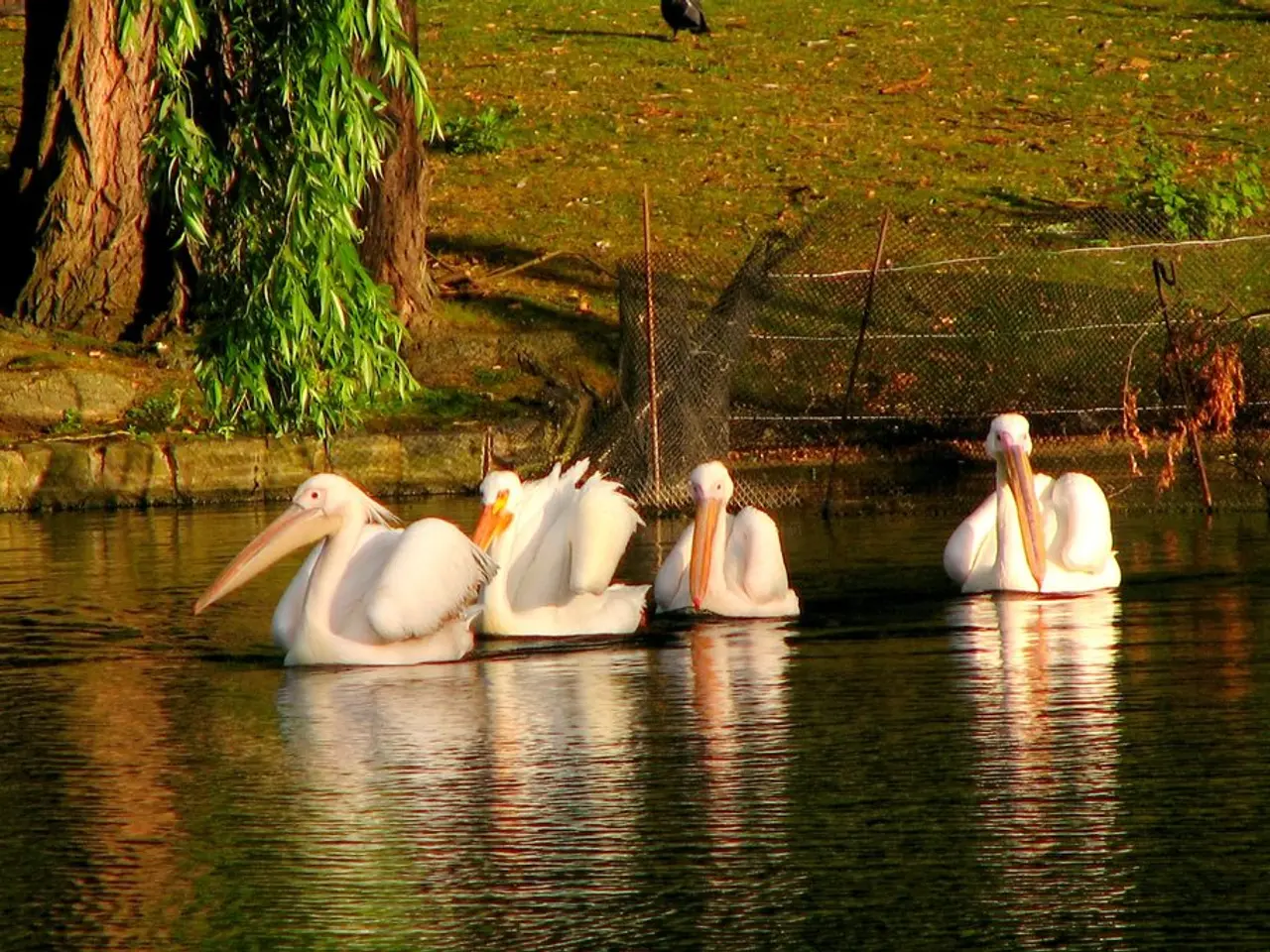German Drought Reaches Record-Breaking Levels
In the face of a prolonged and severe drought affecting many regions of Germany, authorities have been taking decisive action to conserve water resources. The ongoing heatwave and significantly below-average rainfall, particularly in Brandenburg, Mecklenburg-Western Pomerania, and parts of Bavaria, have left soil moisture critically low[1].
To address this crisis, various water conservation measures and strategies have been implemented or emphasized. Public appeals for water savings are being made by authorities and organisations such as the Association of German Cities, urging citizens to proactively reduce non-essential water use at homes and businesses[3].
In addition, drought risk reduction is being incorporated into Germany's national and regional water strategies to enhance resilience. This approach includes managing water demand more prudently across sectors like agriculture, industry, and urban needs, ensuring sustainable availability despite drought conditions[2].
Efforts are also being made to modernize water infrastructure and improve distribution efficiency. Investments are being encouraged in smart water management technologies, including monitoring and AI-assisted systems, to optimize water use[3].
Sector-specific measures have been introduced, particularly in agriculture and forestry, where water restrictions for irrigation and forest management activities are being enforced to prevent overuse of scarce water resources[1][2].
German policymakers, along with EU lawmakers, are advocating for more binding water efficiency targets and dedicated funding to support drought resilience projects, including nature-based solutions and innovation in water use[2][3].
These combined measures aim to mitigate the harsh impacts of the 2025 drought and build resilience against future droughts in Germany[1][2][3].
Several regions in Germany have imposed water withdrawal restrictions. The German Weather Service has reported that this drought has led to such restrictions in several regions. For instance, in Lower Saxony, public and private green areas or sports facilities may not be watered between 11 and 17 o'clock when temperatures exceed 27 degrees, with fines of up to 50,000 euros for repeated violations[4]. Similarly, in the Landkreis Mansfeld-Südharz, watering of gardens has been prohibited between 8 and 18 o'clock since Friday[5].
In some regions, such as Jerichower Land, the ban for surface waters was issued on June 26, and between 10 and 19 o'clock, the use of groundwater and drinking water for irrigation is also prohibited[6]. In the Altmarkkreis Salzwedel, water withdrawal from waters and groundwater has been prohibited since June 24[7].
Water rationing has begun in eight districts in Brandenburg, including Elbe-Elster, Oberspreewald-Lausitz, Dahme-Spreewald, Märkisch-Oderland, Barnim, Spree-Neiße, Cottbus, and Potsdam-Mittelmark[8]. In Dessau-Roßlau, water may not be withdrawn from waters between 10 and 18 o'clock since July 1[9].
The Elbe and Danube rivers are also experiencing low water levels due to the drought, with the Rhine river having already reached its lowest point in 100 years[10]. Dietrich Borchardt, a hydrologist at the Helmholtz Centre, has reported on the low groundwater levels in Germany due to the drought, with 80 percent of measurement sites in Saxony now showing noticeably low groundwater levels[11].
These water conservation measures reflect a multi-level response combining immediate conservation actions with strategic, long-term adaptations to drought risk given forecasts of continuing dry conditions potentially lasting until October 2025[1][2]. The focus is on minimizing water use across all sectors, protecting ecosystems, and securing supply for critical societal needs amid one of Germany’s most severe drought episodes in recent history[1].
References: [1] Deutsche Welle (2025). Germany faces worst drought in 65 years. [online] Available at: https://www.dw.com/en/germany-faces-worst-drought-in-65-years/a-58359228 [2] European Commission (2025). Germany's response to the 2025 drought. [online] Available at: https://ec.europa.eu/info/publications/germany-response-2025-drought_en [3] German Federal Ministry for the Environment, Nature Conservation, Building and Nuclear Safety (2025). Water conservation measures in Germany. [online] Available at: https://www.bmub.bund.de/bmub/en/water-conservation-measures-in-germany.html [4] The Local (2025). Hannover bans watering of public green spaces during heatwave. [online] Available at: https://www.thelocal.de/20250701/hannover-bans-watering-of-public-green-spaces-during-heatwave [5] The Local (2025). Mansfeld-Südharz bans watering of gardens during heatwave. [online] Available at: https://www.thelocal.de/20250702/mansfeld-sudharz-bans-watering-of-gardens-during-heatwave [6] Tagesspiegel (2025). Watering ban in Jerichower Land due to drought. [online] Available at: https://www.tagesspiegel.de/politik/wasserverbot-in-der-jerichower-land-wegen-der-trockenheit/26573202.html [7] The Local (2025). Water withdrawal banned in Altmarkkreis Salzwedel due to drought. [online] Available at: https://www.thelocal.de/20250625/water-withdrawal-banned-in-altmarkkreis-salzwedel-due-to-drought [8] Tagesspiegel (2025). Water rationing begins in eight Brandenburg districts. [online] Available at: https://www.tagesspiegel.de/politik/wasserrationierung-beginnt-in-acht-brandenburg-kreisen/26565164.html [9] The Local (2025). Water withdrawal ban in Dessau-Roßlau. [online] Available at: https://www.thelocal.de/20250701/water-withdrawal-ban-in-dessau-rosslau [10] Deutsche Welle (2025). Low water levels on the Rhine and Danube rivers. [online] Available at: https://www.dw.com/en/low-water-levels-on-the-rhine-and-danube-rivers/a-58359627 [11] Tagesspiegel (2025). Low groundwater levels in Saxony due to drought. [online] Available at: https://www.tagesspiegel.de/politik/tiefe-grundwasserstände-in-sachsen-wegen-der-trockenheit/26566078.html
Environmental science and climate-change have become significant concerns as Germany faces one of its most severe drought episodes in recent history. As a result, authorities have integrated water conservation measures into national and regional water strategies to ensure sustainable availability during drought conditions. These measures include appeals for water savings, drought risk reduction in various sectors, modernization of water infrastructure, and sector-specific measures in agriculture and forestry. Additionally, policymakers are advocating for more binding water efficiency targets and dedicated funding to support drought resilience projects. Weather forecasting provides insight into potentially continuing dry conditions until October 2025, emphasizing the need for long-term adaptations to drought risk.







